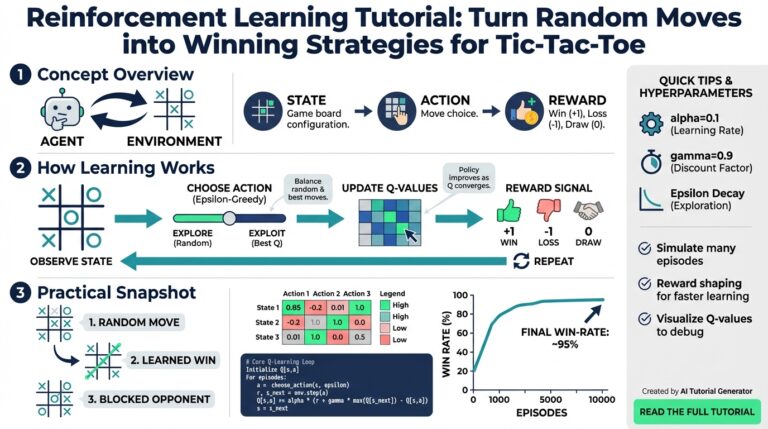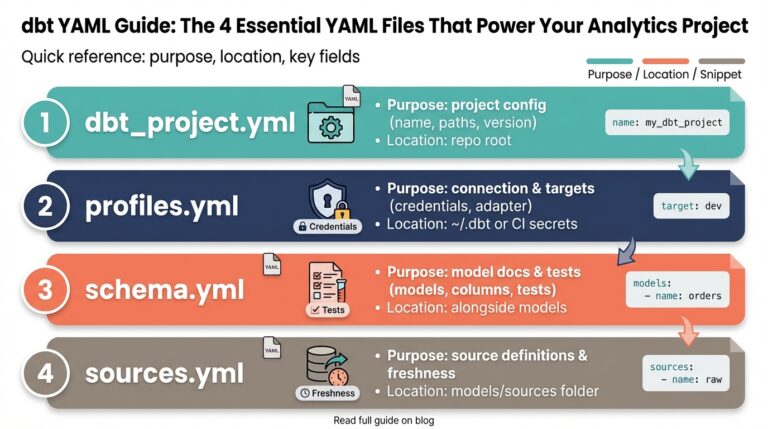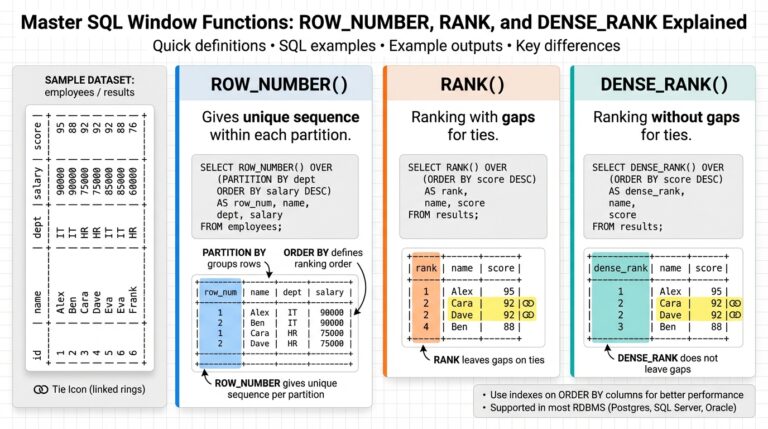Understanding LLM Hallucination: Definition and Examples
Large Language Models (LLMs) like OpenAI’s GPT series and Google’s PaLM have revolutionized the way we approach natural language processing tasks. However, even these state-of-the-art models are not infallible. One of the more perplexing challenges they present is the phenomenon known as “hallucination.” In the context of artificial intelligence, hallucination refers to instances when an LLM generates output that is plausible-sounding but factually incorrect, irrelevant, or completely fabricated.
At its core, LLM hallucination often stems from the model’s design: it predicts the next word in a sequence based on patterns in its training data, not on a live understanding of the world or direct fact-checking capabilities. This sometimes leads to highly confident, yet inaccurate, statements. For example, an LLM might describe non-existent scientific research or invent fictitious statistics, all while providing a coherent-sounding explanation. In an analysis by Nature, researchers detail instances where LLMs created plausible-sounding scientific abstracts for studies that did not exist, even fooling experienced reviewers.
There are different types of hallucinations in LLMs:
- Intrinsic Hallucination: The model misinterprets its prompt or task and delivers incorrect information. For instance, if asked for a biography of a person with little available public data, it might fabricate entire life stories.
- Extrinsic Hallucination: The model adds external facts or references that are unrelated or unjustified. This could mean citing a study or article that sounds real but can’t be found anywhere, a phenomenon explored in depth by Harvard Data Science Review.
Real-world examples of LLM hallucination include generating legal cases that never occurred (highlighted in this news story from The Verge) or recommending medical treatments unsupported by scientific evidence, underscoring concerns over the reliance on generative AI for sensitive or verifiable information.
Understanding how and why LLM hallucinations occur is critical for developers, businesses, and end users alike. Recognizing the signs of hallucination—such as overly detailed but unverifiable claims, sources that don’t exist, or answers inconsistent with established facts—enables more responsible and accurate use of these powerful language tools. For deeper technical insights, consider reading about research from Arxiv.org, which explores the underlying causes and proposed solutions for LLM hallucination.
How Large Language Models Generate Hallucinations
Large Language Models (LLMs) like GPT-4 and similar AI systems are trained on vast amounts of text data to predict and generate human-like responses. However, the intricate process behind their text generation can sometimes produce outputs that are factually incorrect, nonsensical, or seemingly fabricated—these are referred to as “hallucinations.” Understanding how these hallucinations arise is crucial for anyone utilizing or developing AI-powered language tools.
The process of generating text with an LLM generally involves several stages:
- Learning from Massive Datasets: During training, LLMs ingest enormous volumes of information from books, articles, websites, and other media. While this enables them to develop remarkable fluency, it also exposes them to outdated, contradictory, or inaccurate statements present within the training data. When prompted, the model may resurface information from incorrect sources, making it appear as a hallucinated fact. For a deeper dive into training challenges, see MIT Technology Review.
- Pattern Matching Over Understanding: LLMs do not possess understanding or awareness; rather, they operate by predicting the most probable next word based on patterns they’ve seen before. In ambiguous or poorly defined prompts, the model might “fill in the gaps” with plausible-sounding but ultimately invented details. For example, if asked about a lesser-known scientific study, the model may generate citations or data that sound real but do not actually exist—this is a classic form of hallucination. The Harvard Business Review discusses this phenomenon in detail here.
- Synthesizing Novel Responses: When LLMs receive questions that have no clear answer in their training data, they might synthesize new, convincing-sounding statements by piecing together fragments from different contexts. For example, if asked for a “quote” from a famous person on a specific topic, the model might invent one using words and phrases aligned with that person’s known style, rather than citing a genuine quote. Researchers at Stanford University have explored these synthetic tendencies in detail in this article.
- Sensitivity to Prompting: The way a prompt is phrased can significantly affect how an LLM generates its response. Broad, vague, or open-ended prompts give the language model more latitude to “improvise,” which increases the risk of hallucination. Explicit, well-defined prompts can steer the model towards more accurate and reliable information, but even then, errors can persist, especially in specialized or highly technical domains. The importance of prompt design is further explained by the journal Nature.
- Limitations in Reasoning and World Knowledge: LLMs have no way to validate facts in real time. They rely solely on static, historical data learned during training, which means they cannot verify the accuracy or recency of their outputs. This limitation is particularly pronounced regarding current events or emerging scientific research, leading to higher rates of hallucination when answer verification would require up-to-date knowledge. More on this topic is available from Scientific American.
The result of these factors is that LLMs, despite their sophistication, frequently generate hallucinated content, especially in areas outside mainstream knowledge or when confronted with poorly phrased queries. As AI research evolves, understanding and addressing these underlying mechanisms is critical for anyone developing, deploying, or relying on large language models for critical tasks.
Common Causes of Hallucination in LLMs
Hallucination in large language models (LLMs) occurs when these models generate content that is inaccurate, fabricated, or misleading. Understanding the root causes of hallucinations can help researchers and practitioners minimize their occurrence. Here’s a detailed look at some of the most common causes of hallucination in LLMs:
- Training Data Limitations
LLMs are trained on massive datasets sourced from the internet, books, and other digital repositories. However, not all of this data is factual or up-to-date. When an LLM encounters ambiguous, conflicting, or outright false training data, it can easily propagate those inaccuracies when generating responses. For example, if many online sources contain myths or outdated information, the model may repeat those errors as facts. For a comprehensive discussion, see ACM’s research on hallucination in neural text generation. - Overgeneralization
LLMs often try to predict the most probable next token in a sequence without explicit understanding. This can lead to overgeneralization—making sweeping statements based on limited or misinterpreted evidence. For instance, if a model is asked about a niche scientific concept but only has shallow exposure through its training data, it might “fill in the gaps” by generating plausible-sounding but incorrect details. Users may not always spot these inaccuracies, especially if the tone is authoritative. For examples of overgeneralization failures, visit Google AI Blog. - Ambiguous or Poor Prompts
The clarity of input prompts greatly affects output accuracy. Vague or poorly worded queries can cause models to hallucinate because they lack enough context to ground their answers. For example, asking “Tell me about the history of Qolemia” without specifying if Qolemia is a historical event, country, or theory could lead the model to uncritically invent details. This effect is described in-depth by Nature’s study on prompt sensitivity. - Lack of Real-Time or Factual Knowledge
LLMs only know what they have been exposed to during training. If users ask about recent developments or events not included in the training set, the model may guess or fabricate information. This is why current LLMs are not substitutes for real-time news or up-to-date databases. The Meta AI research blog discusses why grounding models in dynamic data is critical for factual integrity. - Optimizing for Fluency Over Factuality
LLMs are optimized to produce text that is fluent and contextually appropriate, which sometimes comes at the expense of accuracy. The pursuit of smooth, convincing prose can sometimes cause the model to “invent” supporting details. This phenomenon has been observed in various benchmarks, as noted in this arXiv paper on hallucination evaluation.
By recognizing and understanding these causes, practitioners can better design prompts and workflows to minimize hallucinations. Furthermore, leveraging ongoing research and continuously updating the knowledge base can help LLMs provide more reliable responses over time.
Real-World Impact of LLM Hallucinations
LLM hallucinations—instances where large language models generate false or misleading information—can have profound real-world consequences. As these AI systems are increasingly adopted in critical domains such as healthcare, law, education, and journalism, the reliability of their responses becomes a matter of significant concern.
One notable example comes from the scientific community, where hallucinated references generated by LLMs have occasionally made their way into academic manuscripts. Researchers, relying too heavily on AI tools, sometimes cite fabricated studies, undermining the credibility of their work and potentially spreading misinformation within scientific circles.
In the realm of healthcare, hallucinations can become a matter of life and death. Imagine a doctor or patient seeking advice from an AI chatbot, only to receive an inaccurate diagnosis or non-existent treatment recommendation. According to STAT News, some medical professionals have already reported AI-generated misinformation, highlighting the urgent need for robust safeguards when using LLMs in patient-facing applications.
The legal industry is another area where LLM hallucinations have already made an impact. In one infamous case, lawyers used ChatGPT to draft a court filing, only to discover that several cited court decisions were entirely fabricated. The resulting embarrassment and potential professional repercussions underscore how hallucinations can erode trust and lead to legal, reputational, and financial consequences.
Even in everyday scenarios, hallucinations pose risks. Educational platforms that leverage LLMs could unwittingly teach incorrect facts, while businesses using AI for customer support may provide customers with misleading information, potentially harming brand reputation. Recent research from Stanford University explores how hallucinations can affect different industries, emphasizing vigilance as AI adoption scales up.
Steps to mitigate these impacts include rigorous fact-checking, integrating LLMs with trusted external databases, and ensuring human oversight—especially in high-stakes contexts. As AI technologies evolve, creating a culture of verification and responsible use is crucial for minimizing harm and maximizing the societal benefits of these powerful tools.
Techniques for Detecting LLM Hallucinations
Detecting hallucinations produced by large language models (LLMs) is a crucial step in ensuring the reliability and accuracy of AI-generated content. Below, we delve into popular and emerging techniques for detecting these hallucinations, providing detailed explanations and referencing authoritative sources for deeper exploration.
1. Human-in-the-Loop Review
One of the most effective—but resource-intensive—ways to spot hallucinations is by involving human experts. Human reviewers meticulously cross-check AI-generated content for factual accuracy and coherence. This technique bridges the gap between automation and reliability, ensuring nuanced errors aren’t overlooked. For example, editorial teams at publishers often appoint subject matter experts to validate technical or scientific claims generated by AI. More information on best practices for human-in-the-loop systems can be found at Allen Institute for AI.
2. Automated Fact-Checking Tools
Integrating third-party fact-checking APIs or frameworks refines the detection process. Tools like Snopes and Full Fact can be programmatically leveraged to cross-verify statements produced by LLMs. Another common approach is to use question-answering models to check the consistency of facts within a given text. For instance, one script might generate a summary while another independently checks for contradictions or non-existent facts. These automated systems flag potentially hallucinatory statements, triggering further inspection.
3. Reference-Based Verification
This approach involves comparing the output of an LLM with trusted, external knowledge bases such as Wikipedia, academic publications, or medical databases like PubMed. If the model’s claim cannot be supported by existing, verifiable data, it’s flagged as a potential hallucination. For example, researchers at Stanford University have published methods for aligning LLM outputs with established reference sources (read more).
4. Consistency Checks Across Multiple Runs
A simple yet powerful technique involves generating multiple responses to the same prompt and comparing their factual statements. If the responses differ significantly on key details or contradict each other, hallucination is likely. This ensemble-style method works especially well in high-stakes fields where consistency is vital—such as medical decision support or legal advice.
5. Use of Gold Datasets and Benchmarks
Evaluating LLM responses against gold-standard datasets, such as those curated for benchmarks like SQuAD or Natural Questions, helps quantify the hallucination rate. Accuracy drops or unexpected answers indicate model hallucination. Synthesizing results over many queries can help gauge hallucination risk in particular domains.
6. Embedding and Similarity Analysis
Modern NLP techniques, such as sentence embedding and cosine similarity, make it possible to compare LLM outputs with canonical answers stored in vector databases. Anomalies in similarity scores can reveal hallucinated content. For an in-depth technical explanation, visit the Association for Computational Linguistics.
By blending these detection techniques and tailoring strategies to your use case, you significantly improve the trustworthiness and safety of LLM-generated content. As research advances, pairing automated tools with human judgment remains the gold standard. Explore additional resources on hallucination detection on the OpenAI arXiv publications.
Proven Strategies to Minimize Hallucinations in LLM Outputs
Reducing hallucinations in Large Language Model (LLM) outputs is critical for ensuring reliability and trustworthiness, especially in professional and sensitive applications. Below are several proven strategies that can be applied to minimize hallucinations and enhance the credibility of LLM responses.
1. Improve Training Data Quality
The foundation of any LLM’s accuracy lies in the quality and diversity of its training data. Hallucinations often emerge from poorly curated data that contain factual errors, biases, or inconsistencies. To counter this:
- Curate High-Quality Datasets: Source data from reputable publications and peer-reviewed research. For example, datasets can be filtered through peer-reviewed scientific archives to ensure accuracy.
- Perform Data Cleaning: Remove duplicate or misleading content and systematically verify sources. Tools like PubMed Central can help cross-verify biomedical claims.
- Diversity and Balance: Ensure the dataset represents diverse perspectives and avoids overfitting to niche or repetitive information, reducing the risk of regurgitating incorrect facts.
2. Use Retrieval-Augmented Generation (RAG)
A powerful method to reduce hallucination is integrating external knowledge retrieval systems directly into LLM workflows. Retrieval-Augmented Generation enables the model to search a live database or the web before generating answers, which grounds outputs in verifiable information.
- Real-Time Fact Checking: Before outputting an answer, the LLM queries supporting databases or knowledge graphs to validate or supplement its response.
- Example: When asked a current events question, an LLM using RAG will pull the latest articles from established news sites like BBC News and use the findings to craft its answer.
3. Enhance Prompt Engineering
The structure and wording of user prompts can majorly impact LLM output accuracy. By fine-tuning how questions and commands are posed, hallucination risks can be reduced.
- Explicit Context: Explicitly instruct the LLM to cite sources or to answer only if confident. For instance, prompts like “Only answer if you are certain, and cite the source” reduce speculative responses.
- Chain-of-Thought (CoT) Prompting: Encourage the model to walk through its reasoning step by step. According to research by Google AI, this approach helps models self-check during output generation.
4. Implement Post-Processing and Human-in-the-Loop Validation
Even after initial generation, it is crucial to review LLM output to catch and correct hallucinations. This can involve automated systems and human reviewers.
- Automated Fact-Checking Algorithms: Integrate AI tools that compare LLM statements against trusted databases, flagging inconsistencies for review.
- Expert Oversight: In fields such as healthcare or law, require human experts to sign off on AI-generated responses, as promoted by industry standards (AMA Journal of Ethics).
5. Ongoing Model Evaluation and Fine-Tuning
Regular assessment and retraining are vital for maintaining LLM performance. Techniques include:
- Adversarial Testing: Routinely challenge the model with questions designed to expose weaknesses. For example, using synthetic data to identify common hallucination triggers (OpenAI research).
- User Feedback Loops: Continuously collect and analyze user feedback to pinpoint errors, then use this data to update and fine-tune the LLM.
By combining advanced retrieval techniques, high-quality data curation, careful prompt engineering, thorough post-processing, and proactive model oversight, organizations can dramatically reduce the risk of LLM hallucinations and ensure more factual, trustworthy AI outputs. For a comprehensive review of best practices, consult resources such as Stanford’s AI Index Report.



